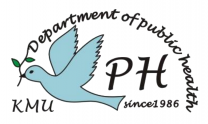Regarding indoor air pollutants, Dr. Pei-Shih Chen published an important research article in 2019, reporting that jumping on the bed and associated increases of PM10, PM2.5, PM1, airborne endotoxin, bacteria, and fungi concentrations. This is the first study discussing the increased air pollutants from the behavior of jumping on the bed in the world. Jumping on the bed is a favorite behavior of children; however, no study has investigated the increased air pollutants resulting from jumping on the bed. Therefore, the team led by Pei-Shih Chen, the Chair of Public Health of Kaohsiung Medical University, aimed to investigate the elevated concentrations of particulate matter (PM) and bioaerosols from jumping on the bed and making the bed. Simulation of jumping on the bed and making the bed was performed at sixty schoolchildren's houses in Taiwan. PM10, PM2.5, PM1 (PM with aerodynamic diameter less than 10, 2.5, and 1 μm, respectively) and airborne bacteria, fungi and endotoxin concentrations were simultaneously measured over simulation and background periods. Our results show the increase of PM10, PM2.5, PM1, airborne bacteria and fungi through the behavior of jumping on the bed (by 414 μg m-3, 353 μg m-3, 349 μg m-3, 6569 CFU m-3 and 978 CFU m-3, respectively). When making the bed, the PM10, PM2.5, PM1, airborne bacteria and fungi also significantly increased by 4.69 μg m-3, 4.09 μg m-3, 4.15 μg m-3, 8569 CFU m-3, and 779 CFU m-3, respectively. Airborne endotoxin concentrations significantly increased by 21.76 EU m-3 following jumping on the bed and making the bed. Moreover, when jumping on the bed, higher PM2.5 and PM1 concentrations in houses with furry pets rather than no furry pets, and less airborne fungi in apartments than in townhouses were found. For making the bed, lower airborne fungi was found in houses using essential oils rather than no essential oils using. The airborne endotoxin concentrations were positively associated with furry pets and smokers in the homes and negatively correlated to the home with window opening with a statistical significance during the periods of jumping on the bed and making the bed. In conclusion, Dr. Chen pointed out that significant increases of PM and bioaerosols during jumping on the bed and making the bed may need to be concerned.
